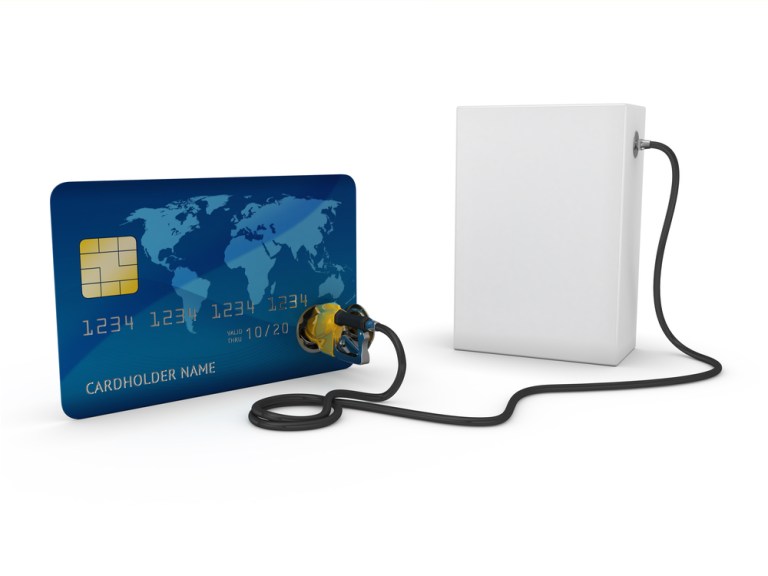
The fleet management space, says Fleetio Marketing Director Lori Higdon, is a bit “old school.” Sure, a business’ need to transport goods from point A to point B is as old as trade and commerce itself.
But today, the fleet arena is getting filled with some of the most robust technology available, and we’re not just talking about GPS. Telematics integrations, which can link a vehicle into the Internet of Things, combined with financial data funneling in from fleet cards and driver spend reports, means fleet managers often face more than they can easily handle to do their jobs, while keeping an eye on the bottom line.
Higdon recently spoke with PYMNTS about the hurdles of managing all of this data and why fleet service providers, whether in payments or maintenance, can no longer exist separately. Rather, their data must communicate, she said.
“People who are using fuel cards are getting these weekly or monthly invoice/reports that aren’t incredibly intuitive,” the executive said. “They kind of just file them away.”
Sure, a fleet card’s financial reports can help a company understand what it’s spending, but Higdon explained that linking that payment data into other fleet systems, like telematics and maintenance, can make that information far more meaningful.
Using that information, fleet solutions firms can customize their corporate reports to help them identify cost-per-vehicle and each vehicle’s cost-per-mile.
“Drilling into that data is huge in terms of cost savings for fleet,” stated Higdon. “You can pinpoint where you’re losing money; you can make the data actionable.”
But even fleet solutions not directly providing spend solutions have an impact on the books, Higdon said.
Take, for instance, the ability to automate maintenance alters. Those notifications can only occur thanks to an integration with a GPS partner (Fleetio itself recently named NexTraq as its latest GPS and telematics partner), as telematics data can funnel into a system and trigger warnings.
If an odometer passes a certain threshold, the data from that odometer can alert a manager that the vehicle needs an oil change, Higdon offered as an example.
“It’s a big boost in productivity and efficiency for a team, and there are cost savings as well,” she explained. “A lot of studies in the fleet space show the true cost of having a vehicle down for a day.”
Last year, fleet company Decisiv assessed the average cost to a company when a vehicle is down. Not only is there the cost of repairing a down vehicle, but there are additional costs, like a loss of productivity and an increased reliance on rental vehicles, plus continuing pay for employees, that are all some of the less-obvious burdens that hit a company’s books when a truck is off the road.
In all, Decisiv found that, every day, it costs a company between $448 and $760 when a vehicle is in downtime.
“Most fleets don’t recognize or even consider the cost of downtime, which, in my experience, represents the true ‘cost’ of running a fleet,” stated Bob Stanton of fleet consulting firm Stanton Consulting in response to Decisiv’s conclusions.
In another example provided by Higdon, fuel location acceptance reporting can identify not only when a purchase was made at the pump but where a vehicle was during that purchase, allowing managers to gain visibility into whether any fuel theft has occurred.
In this case, it’s all about protecting against any loss of profits and upping efficiency of the spending a fleet manager is already doing, said Higdon.
Fleet managers are hardly experts in telematics, payment cards and high-technology features that can help them manage spending, so that means there is a bit of schooling involved in helping companies integrate all of their fleet systems, from GPS to fuel cards.
“With the rise in technology in the fleet management space — it’s a bit of an old-school space — we definitely see technology seeping in with the rise of telematics,” noted Higdon. “The industry is becoming curious about it and looking into it; there’s a little bit of education we have to do on our end.”
Enlightening the fleet space of the financial impact of these technologies is worth it, however, explained the executive. These tools have made it possible for fleet solutions to interconnect, resulting in even more efficiency and cost savings.
“Technology makes things easier, but at the same time, when you’re using multiple software systems, a lot of times, people with those could talk to one another and share their data,” Higdon said.
With all of the items on the agenda for a fleet manager, automating data analytics across fleet services can make the job more automated and put many of those tasks on autopilot.
“It makes it easier for a fleet manager to manage a ton of different things,” the executive added. “Fuel is a huge thing, maintenance is a huge thing, there is also the task of managing drivers, employees, mechanics. There’s so much to think of when it comes to fleet.”